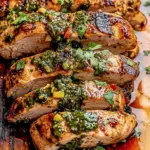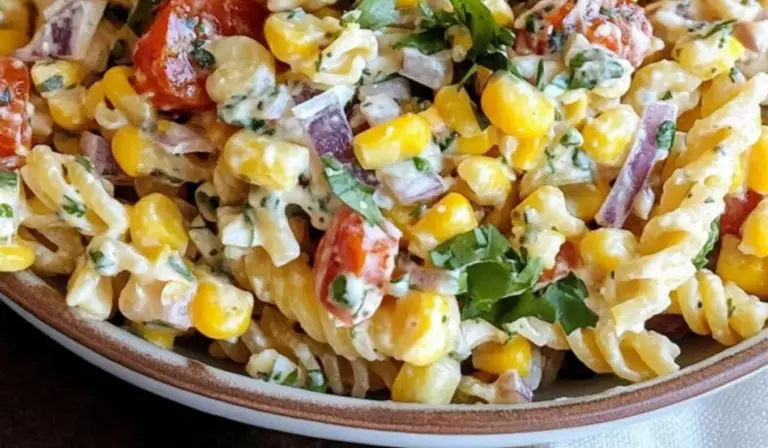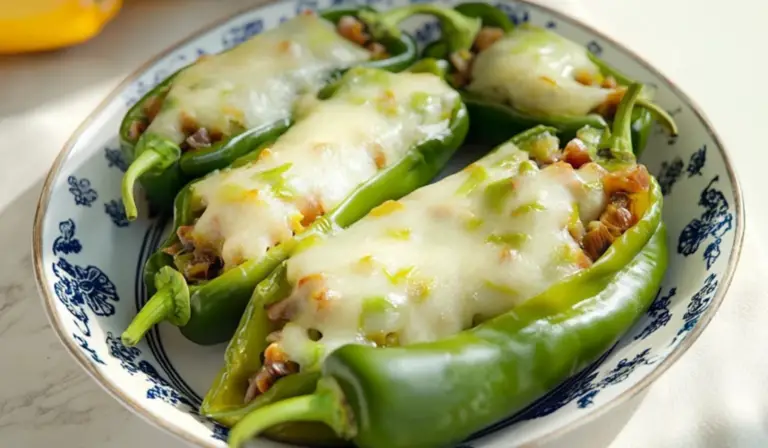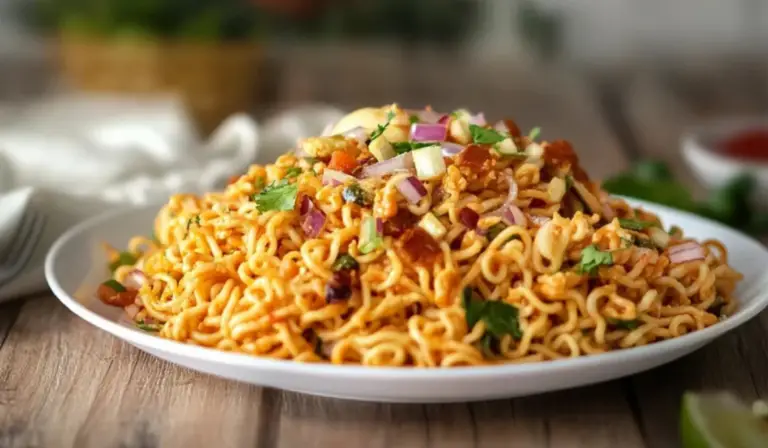Chimichurri Chicken: A Flavorful and Easy Recipe for Beginners
Cooking can often seem intimidating, especially when you’re just starting out. However, there are certain dishes that simplify the process while still delivering an explosion of flavors, and Chimichurri Chicken is one of those dishes. It’s the perfect recipe for beginners looking to build their cooking confidence while also impressing friends or family with a delicious meal.
PrintChimichurri Chicken: A Flavorful and Easy Recipe for Beginners
🍝🔥 Mexican Spaghetti is a bold and savory twist on classic pasta! This easy one-pot dish combines tender spaghetti with a smoky, spiced tomato sauce, seasoned ground beef, and melty cheese for an irresistible Tex-Mex flavor explosion. 🌮🧀✨
- Prep Time: 5 minutes
- Cook Time: 8 minutes
- Total Time: 43 minutes (including marinating time)
- Yield: 4 servings 1x
Ingredients
- 4 boneless, skinless chicken breasts
- 8 tablespoons olive oil
- 8 tablespoons white vinegar
- 2 cups fresh parsley, chopped
- 10 garlic cloves, minced
- 4 teaspoons red pepper flakes
- 4 teaspoons dried rosemary
- 2 teaspoons salt
- 2 teaspoons pepper
- 4 teaspoons onion powder
- 2 teaspoons paprika
- 2 teaspoons cayenne pepper
Instructions
- Prepare the Chimichurri Sauce: Start by placing all the chimichurri ingredients (olive oil, vinegar, parsley, garlic, red pepper flakes, rosemary, salt, pepper, onion powder, paprika, and cayenne pepper) into a food processor. Pulse for a few seconds until the ingredients are chopped but not fully blended into a smooth sauce. The texture should still be chunky, allowing you to taste the individual components, especially the herbs and garlic.
- Marinate the Chicken: Take half of the chimichurri sauce and brush it evenly over the chicken breasts. Ensure each breast is thoroughly coated. This is the marinade that will infuse the chicken with flavor. The other half of the chimichurri will be used to brush on the chicken after grilling. To avoid cross-contamination, do not use the marinade that has come into contact with raw chicken for later stages.
- Let the Chicken Marinate: Place the marinated chicken in the refrigerator for at least 30 minutes, but you can leave it for up to 3 hours if you have the time. The longer the chicken marinates, the more the flavors will develop. If you’re in a rush, even a quick 30-minute soak will work wonders.
- Preheat the Grill or Grill Pan: While the chicken is marinating, preheat your grill or grill pan to medium-high heat. Lightly oil the grill or pan to prevent the chicken from sticking. If you’re using a grill, you can also oil the grill grates with a paper towel soaked in oil for easy cleanup.
- Grill the Chicken: After marinating, remove the chicken breasts from the marinade and discard the marinade. Place the chicken breasts on the hot grill or grill pan. Grill the chicken for 6-8 minutes per side, depending on the thickness of the breasts. You want the internal temperature of the chicken to reach 165°F (74°C) to ensure it’s fully cooked. Be mindful of the heat of your grill, as too high a heat can cause the chicken to burn on the outside before cooking through.
- Let the Chicken Rest: Once the chicken is cooked, remove it from the grill and let it rest for 3-5 minutes. This step allows the juices to redistribute throughout the chicken, making it more moist and tender when you cut into it.
- Brush with Additional Chimichurri: After the chicken has rested, brush it with the remaining chimichurri sauce to enhance the flavors and add a burst of freshness.
- Serve and Enjoy: Slice the chicken against the grain and serve it hot. The chimichurri sauce will have seeped into the chicken, leaving you with a flavor-packed dish ready to enjoy.
Notes
How to Tell When Chicken is Fully Cooked: One of the most common challenges for beginner cooks is knowing when chicken is done. The best way to ensure it’s fully cooked is to use a meat thermometer. Insert the thermometer into the thickest part of the chicken breast—once it reaches 165°F (74°C), you can be sure it’s safe to eat.
What to Do If Your Chicken Browns Too Quickly: If your chicken is browning too quickly on the outside but isn’t cooked through on the inside, reduce the heat slightly. You can also move the chicken to a cooler part of the grill or grill pan to let it cook more slowly.
Avoid Overcooking Your Chicken: Overcooked chicken can become dry and tough. If you find that your chicken is drying out, it’s often because it’s been on the grill for too long. Use a meat thermometer to avoid this, and try not to overflip the chicken while it’s cooking. Once it’s in place, let it cook undisturbed for the best results.
Make Prep Time Efficient: To save time, you can chop the parsley and garlic ahead of time and store them in the refrigerator until you’re ready to cook. This can help streamline the process when you’re ready to prepare the meal.
Chimichurri Variations: If you find yourself making this dish often, feel free to experiment with the chimichurri sauce. Add a splash of lemon juice for a citrusy twist, or swap out the vinegar for balsamic vinegar for a deeper flavor.
If you’re new to the kitchen, one of the most essential things to learn is how to marinate and cook chicken properly. Chimichurri Chicken teaches you both, with the added benefit of a tasty, herb-filled sauce that brings out the chicken’s natural flavors. This dish is also versatile, so it can be served in many different ways, making it an excellent option for any meal.
In this guide, we’ll walk you through every step, from the ingredients to the final plating, with helpful tips along the way. Let’s dive into creating this mouthwatering Chimichurri Chicken!
Ingredients and Preparation
Ingredients:
- 4 boneless, skinless chicken breasts
- 8 tablespoons olive oil
- 8 tablespoons white vinegar
- 2 cups fresh parsley, chopped
- 10 garlic cloves, minced
- 4 teaspoons red pepper flakes
- 4 teaspoons dried rosemary
- 2 teaspoons salt
- 2 teaspoons pepper
- 4 teaspoons onion powder
- 2 teaspoons paprika
- 2 teaspoons cayenne pepper
Alternative Ingredient Suggestions:
- Chicken Breasts: If you don’t have boneless, skinless chicken breasts, you can use chicken thighs for a slightly juicier result. Just be mindful of the cooking time, as thighs may need a few extra minutes.
- Olive Oil: While olive oil is the traditional choice, you can substitute it with avocado oil or vegetable oil. The flavor won’t be quite the same, but the result will still be great.
- White Vinegar: If you don’t have white vinegar, apple cider vinegar or red wine vinegar can be used as substitutes, offering a slightly different tang to the chimichurri.
- Fresh Parsley: For a change in flavor, you can experiment with fresh cilantro instead of parsley. It will add a bit of a different, yet delicious, twist to the sauce.
- Garlic: If you don’t have fresh garlic cloves, garlic powder can be used, though fresh garlic will give you the most robust and authentic flavor.
- Herbs and Spices: The blend of spices in this recipe (paprika, cayenne pepper, red pepper flakes, rosemary, etc.) contributes to a balanced heat and depth of flavor. If you want to adjust the spice level, reduce the cayenne pepper or red pepper flakes based on your preference.
Once you have all your ingredients ready, it’s time to prepare your chimichurri marinade.
Step-by-Step Instructions
- Prepare the Chimichurri Sauce: Start by placing all the chimichurri ingredients (olive oil, vinegar, parsley, garlic, red pepper flakes, rosemary, salt, pepper, onion powder, paprika, and cayenne pepper) into a food processor. Pulse for a few seconds until the ingredients are chopped but not fully blended into a smooth sauce. The texture should still be chunky, allowing you to taste the individual components, especially the herbs and garlic.
- Marinate the Chicken: Take half of the chimichurri sauce and brush it evenly over the chicken breasts. Ensure each breast is thoroughly coated. This is the marinade that will infuse the chicken with flavor. The other half of the chimichurri will be used to brush on the chicken after grilling. To avoid cross-contamination, do not use the marinade that has come into contact with raw chicken for later stages.
- Let the Chicken Marinate: Place the marinated chicken in the refrigerator for at least 30 minutes, but you can leave it for up to 3 hours if you have the time. The longer the chicken marinates, the more the flavors will develop. If you’re in a rush, even a quick 30-minute soak will work wonders.
- Preheat the Grill or Grill Pan: While the chicken is marinating, preheat your grill or grill pan to medium-high heat. Lightly oil the grill or pan to prevent the chicken from sticking. If you’re using a grill, you can also oil the grill grates with a paper towel soaked in oil for easy cleanup.
- Grill the Chicken: After marinating, remove the chicken breasts from the marinade and discard the marinade. Place the chicken breasts on the hot grill or grill pan. Grill the chicken for 6-8 minutes per side, depending on the thickness of the breasts. You want the internal temperature of the chicken to reach 165°F (74°C) to ensure it’s fully cooked. Be mindful of the heat of your grill, as too high a heat can cause the chicken to burn on the outside before cooking through.
- Let the Chicken Rest: Once the chicken is cooked, remove it from the grill and let it rest for 3-5 minutes. This step allows the juices to redistribute throughout the chicken, making it more moist and tender when you cut into it.
- Brush with Additional Chimichurri: After the chicken has rested, brush it with the remaining chimichurri sauce to enhance the flavors and add a burst of freshness.
- Serve and Enjoy: Slice the chicken against the grain and serve it hot. The chimichurri sauce will have seeped into the chicken, leaving you with a flavor-packed dish ready to enjoy.
Beginner Tips and Notes
How to Tell When Chicken is Fully Cooked: One of the most common challenges for beginner cooks is knowing when chicken is done. The best way to ensure it’s fully cooked is to use a meat thermometer. Insert the thermometer into the thickest part of the chicken breast—once it reaches 165°F (74°C), you can be sure it’s safe to eat.
What to Do If Your Chicken Browns Too Quickly: If your chicken is browning too quickly on the outside but isn’t cooked through on the inside, reduce the heat slightly. You can also move the chicken to a cooler part of the grill or grill pan to let it cook more slowly.
Avoid Overcooking Your Chicken: Overcooked chicken can become dry and tough. If you find that your chicken is drying out, it’s often because it’s been on the grill for too long. Use a meat thermometer to avoid this, and try not to overflip the chicken while it’s cooking. Once it’s in place, let it cook undisturbed for the best results.
Make Prep Time Efficient: To save time, you can chop the parsley and garlic ahead of time and store them in the refrigerator until you’re ready to cook. This can help streamline the process when you’re ready to prepare the meal.
Chimichurri Variations: If you find yourself making this dish often, feel free to experiment with the chimichurri sauce. Add a splash of lemon juice for a citrusy twist, or swap out the vinegar for balsamic vinegar for a deeper flavor.
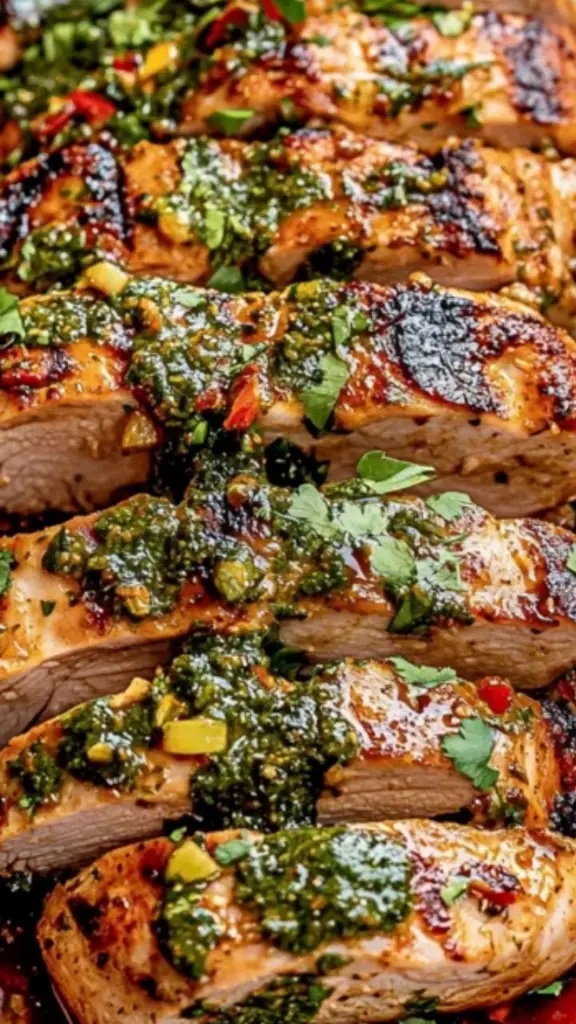
Serving Suggestions
While Chimichurri Chicken is delicious on its own, it pairs beautifully with a variety of sides and accompaniments that enhance the dish’s flavor and texture. Here are a few ideas to elevate your meal:
- Salads: Serve the grilled chicken on top of a fresh green salad, perhaps with some cherry tomatoes, cucumbers, and a light vinaigrette. The freshness of the salad complements the bold, tangy flavor of the chimichurri sauce.
- Rice or Quinoa: A side of fluffy rice or quinoa is an excellent option. The neutral flavor of rice lets the chimichurri chicken take center stage, and the grains soak up any leftover sauce.
- Vegetables: Roasted vegetables like bell peppers, zucchini, or sweet potatoes make a great pairing. Their natural sweetness balances the heat of the chimichurri, and they add a lovely texture to the dish.
- Pasta: For a heartier meal, serve the chimichurri chicken over a bed of pasta. A simple pasta like spaghetti or penne works well, allowing the sauce to drizzle down over the noodles.
Leftovers: If you have any leftovers, store the chicken in an airtight container in the fridge for up to 3 days. It’s perfect for meal prepping and can be enjoyed cold in salads, or reheated for another delicious dinner.
Engagement Features
Now that you’ve got the recipe, it’s time to get cooking! I encourage you to try this recipe and experiment with the chimichurri sauce. Cooking is all about creativity and finding what works best for you. Once you’ve tried it, share your experience with us in the comments. Did you add a twist to the recipe? How did your chicken turn out? I’d love to hear your thoughts and help you troubleshoot any challenges you may have encountered along the way.
Remember, the kitchen is your playground. This Chimichurri Chicken is a fantastic starting point, but don’t be afraid to add your own spin to it. Happy cooking, and I hope this recipe brings delicious meals to your table!


